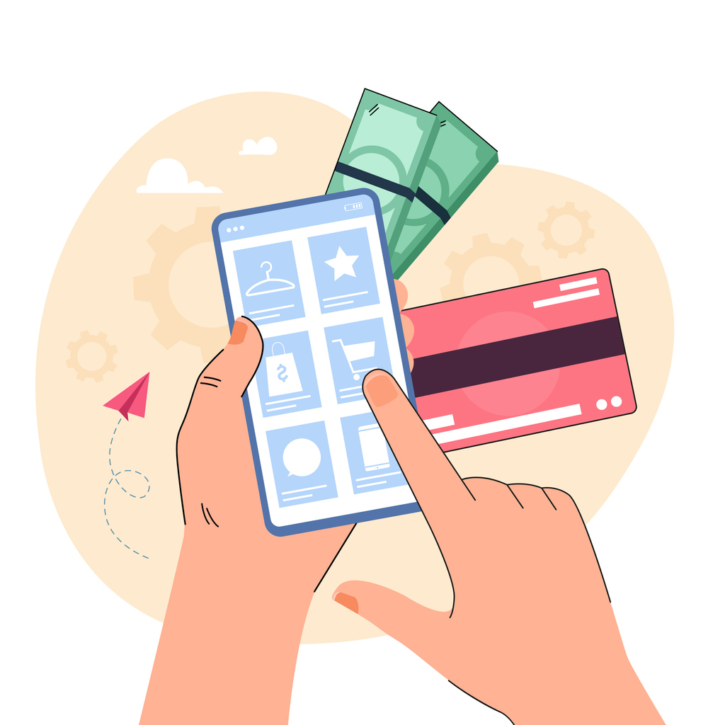The history of e-commerce: context, beginnings and evolution
We may feel like we have a complete understanding of e-commerce, however, the history of this technological revolution is much richer and more complex than you might imagine. In this article, we’re offering you the chance to travel through time to discover the beginnings of e-commerce, its development and what can we expect next.
When did e-commerce begin? (beginnings)
The story of e-commerce began in the 1970s, well before the arrival of the Internet as we know it today.
The first online transactions were made possible thanks to technologies such as Electronic Data Interchange (EDI). The latter enabled companies to exchange sales documents, such as purchase orders and invoices, electronically.
In 1994, the rise of the World Wide Web and the launch of the first online stores paved the way for the growth of e-commerce. One of the key moments of this period was the first secure online transaction.
Since 1994, e-commerce has continued to grow, with the emergence of major platforms such as Amazon and eBay. These sites revolutionised the way in which we buy goods and laid the foundations of e-commerce as we know it today.
When was the first online transaction made?
On 12 August 1994, a headline in the New York Times read ‘Attention Shoppers: Internet is Open’.

The previous day, 11 August 1994, the very first online purchase had been made: a CD by Sting, which was sold for $12.48 by businessman Dan Kohn via his website NetMarket.
E-commerce key dates (listed chronologically)
Here are the key dates in the history of online commerce, from its beginnings to the present day. These events will help you understand the evolution of e-commerce throughout its history.
1979: Michael Aldrich invents the ancestor of e-commerce
The ingenious inventor Michael Aldrich, pictured below, first connected a modified television to a computer via a telephone line in 1979. This technology (modern in its day) made it possible to transmit payment data securely between two companies.

1982: the first e-commerce company is created
The Boston Computer Exchange, the very first online business, was launched in 1982, providing a marketplace for the sale and exchange of computer parts.
1989: the World Wide Web is born
The invention of the World Wide Web (or WWW) marked the 1990s. This technology made it possible to access web pages via a browser. It was the brainchild of British physicist Tim Berners-Lee.
1992: the first online bookstore opens
In 1992, Charles M. Stack created Book Stacks Unlimited: the first online bookstore. In the beginning, this was a BBS (bulletin board system), but it became a real marketplace two years later, adopting the name ‘Books.com‘.
1994: the web browser Netscape Navigator is launched
Before Google came onto the scene, Marc Andreessen and Kim Clark launched the world’s first web browser: Netscape Navigator. It was the main web browser on Windows tools during the 1990s.
1995: Amazon takes its first steps and the SSL protocol is created

In 1995, Jeff Bezos launched the business that would become the biggest online marketplace in the world: Amazon. In the beginning, this platform was devoted to selling books.
The same year, the famous SSL security protocol was launched, making online sales safer.
2000: Confinity and X.com develop PayPal
In March 2000, two American startups, Confinity and X.com, merged their technologies to launch a secure money-transfer service. In 2001, the business was renamed PayPal and is now one of the main online payment platforms in the world.
For the record, PayPal enjoyed strong growth thanks to its integration with eBay, which was the leading online auction platform at the time. EBay users embraced PayPal en masse, boosting the tool’s popularity.
If you want to find out more, here are the possible payment methods on an e-commerce site.
2004: Shopify enters the e-commerce story
When Tobias Lütke, Daniel Weinand and Scott Lake launched Shopify, they were initially looking to create an online store to sell snowboarding equipment. Dissatisfied with the solutions available on the market, they decided to create their own platform to facilitate the creation and management of online stores.
Translating your Shopify site is now just a few clicks away with our TextMaster integration. ➡️ Find out more
2014: Apple introduces Apple Pay
In 2014, Apple had a big impact on the e-commerce story when it launched Apple Pay. Announced on 9 September 2014, this feature dedicated to mobile payment and digital wallet management accelerated the adoption of m-commerce.
The same year saw the creation of Instagram, a social network that later became a major player in social commerce.
2020: e-commerce explodes worldwide
The COVID-19 pandemic sparked a global e-commerce boom as consumers turned to online shopping to avoid visiting physical shops.
Since then, businesses have continued to develop multi-channel strategies by combining physical shops and online stores.
🌱
Do you know which is more harmful to the environment, a physical shop or an e-commerce site? Find the answer here.
2023: the development of AI in e-commerce
Artificial intelligence is revolutionising the e-commerce sector, as it is for the translation industry, too. And with good reason! It enables customisation of the shopping experience, better stock control and optimisation of marketing strategies.
What does the future hold for e-commerce?
Shopping via mobile phone
In July 2023, 60% of all e-commerce sales worldwidewere made on mobile phones. These figures are continuing to grow year after year. For online retailers, it has become essential to create e-commerce sites that are adapted for mobile phones.
Artificial intelligence (AI) 🤖
There are many ways in which artificial intelligence (AI) is used in e-commerce:
- to personalise the shopping experience
- to automate certain customer service tasks
- to provide more precise product recommendations, etc.
All these new innovations contribute to improving the online shopping experience, for both customers and online retailers.
Virtual try-on (VR)🧥
Virtual try-on is one of the major trends in e-commerce today. It is now possible to try on clothes, glasses and/or accessories without having to physically visit a shop.
To learn more about this subject, check out our complete file on virtual try-on in e-commerce.
The story of e-commerce: the final word
E-commerce has certainly changed since the first online transaction in 1994! One thing is certain: it is now more popular than ever. According to eMarketer in 2023, global e-commerce sales reached 5.78 trillion dollars. And eMarketer predicts that this figure will rise to 8 trillion dollars by 2027!
Based on these forecasts, we can confidently conclude that online retailing has a bright future ahead of it.
To continue to expand your knowledge, check out the role and benefits of the 3D Secure protocol.





